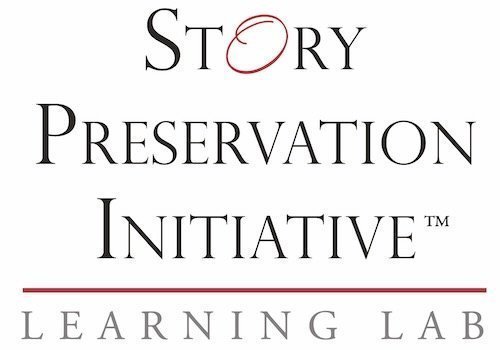April 19 is the 80th Anniversary of the Warsaw Ghetto Uprising
Photo by Adrian Grycuk, Monument to the Warsaw Ghetto Heroes (eastern side) - 70th Anniversary of the Warsaw Ghetto Uprising
Honor the memory of those who fought
Story Preservation Initiative was invited by the POLIN Museum in Warsaw, Poland to join with others around the world to commemorate the 80th anniversary of the Warsaw Ghetto Uprising. The Uprising took place between the dates of April 19, 1943, and May 16, 1943. SPI invites students to participate.
Learn About the Warsaw Ghetto Uprising
The Warsaw ghetto was the largest Jewish ghetto in German-occupied Europe. Established by the Germans in October 1940 and sealed that November, the ghetto housed approximately 400,000 Jews.
In early 1943, inhabitants of the ghetto received a warning from the Jewish Combat Organization (ŻOB) of a final deportation action planned by the Germans. The ŻOB urged those in the ghetto to retreat to hiding places. Instead, on April 19, 1943, the eve of the Passover holiday, some 700 Jews living in the ghetto took up arms against the Germans and began what was to be their final act of armed resistance. They were led by Mordechai Anielewitz.
The (mostly young) Jewish fighters clashed with German forces, sometimes in hand-to-hand combat. Although they were poorly equipped and lacked military training and experience, they had the advantage of being able to wage guerilla warfare. They would strike and then retreat to the safety of ghetto buildings, bunkers, and underground tunnels. The general ghetto population likewise thwarted German deportation efforts, refusing to assemble at collection points and burrowing in underground bunkers.
In the end, the Germans burned and then demolished the ghetto, block by block, in an effort to smoke out those in hiding.
The ghetto fighters and the civilian population who supported them held the Germans at bay for nearly a month. On May 8, 1943, German forces succeeded in seizing ŻOB headquarters at 18 Mila Street, and on May 16, it was announced that “The former Jewish Quarter in Warsaw is no more.”
Information on the Warsaw Ghetto Uprising is available on numerous sites, including the POLIN Museum website, the US Holocaust Memorial Museum website, and the Yad Vashem site.
Sources: POLIN Museum, US Holocaust Memorial Museum
This April 19, Honor the Bravery of the Jewish Fighters
How can you get involved in the commemoration of the Warsaw Ghetto Uprising?
Make a daffodil; all you need is paper, glue, and scissors.
Why the daffodil?
Marek Edelman, the last surviving leader of the Warsaw Ghetto Uprising, used to receive a bouquet of yellow daffodils from an anonymous person every year on April 19. He would lay them at the Monument to the Ghetto Heroes in memory of those who fought and died. The paper daffodils, which people wear on this day, are inspired by this custom. Edelman, who remained in Poland after the war, passed away in 2009.
The custom is similar to Americans wearing red poppy flowers as a way to honor the men and women who have lost their lives protecting our country.
Students are encouraged to share their daffodils with friends, community members, and family and explain their meaning.
Watch "There Was No Hope", a film about the Warsaw Ghetto Uprising produced by POLIN Museum. You’ll need to adjust the closed captions for English subtitles.
SPI Recordings and Project Prompts
To listen to SPI’s original, primary-source recordings of Holocaust survivors, click here.
Project Prompts / Samuel Bak
Have students listen to Samuel Bak’s story. Have them discuss:
Shown: Helmuth and Jutta Cords. Image courtesy of Claudia Cords-Damon.
There were a number of people in Sam Bak’s story who worked as part of the resistance. Who were they?
What were their names? What did they do?
To what degree did they put their own lives in peril?
Were all of those who resisted Jewish?
Project Prompts / Claudia Cords-Damon
Have students listen to Claudia Cords-Damon’s Story “The 1944 Plot to Assassinate Hitler” and have them discuss:
There were a number of people in Claudia’s story who worked as part of the resistance. Who were they?
What were their names? What did they do?
What were some of the more informal ways that people resisted?
To what degree did they put their own lives in peril?
Were all of those who resisted Jewish?
Every story in the SPI Holocaust collection involves information on those who risked their lives to help. What might you have done if you had lived in Europe during this time?
About Us
SPI makes its work available to all, free of charge.
Story Preservation Initiative has developed two Learning Lab projects: Our “Storytelling Learning Lab” is appropriate for students in grades Pre-K through 3, and our “Learning Lab” project is suited for students in grades 4-12.
Our Vision: Story Preservation Initiative believes in the transformative power of story to connect people around our common humanity and create a better future. We value generosity, diversity, inclusivity, and equity in our stories and in our outreach, exploring and illuminating the deepest levels of human potential.
Our Mission: Story Preservation Initiative is a leading producer and online distributor of original, content-rich stories for K-12 students. Our open-access stories and educational materials are used by educators nationwide with a focus on New England, engaging the hearts and minds of young people to impart content knowledge and foster curiosity, creativity, and critical thinking as they open doors to possible career paths in professions associated with the arts, sciences, humanities, and trades.
WEB: www.storypreservation.org
Please consider making a donation - in any amount - to help us keep the stories coming. To make a tax-deductible donation, click here.





